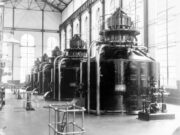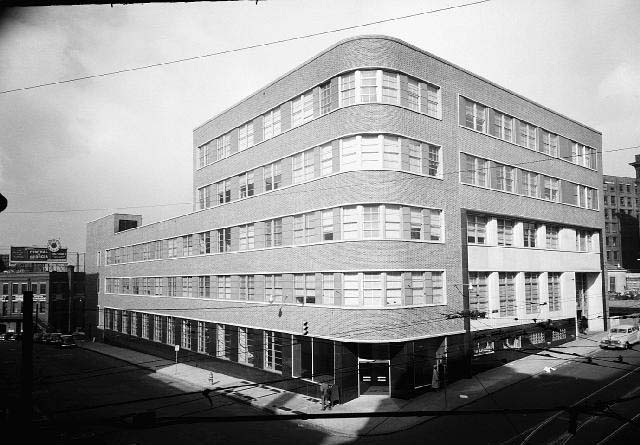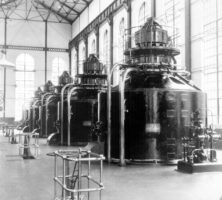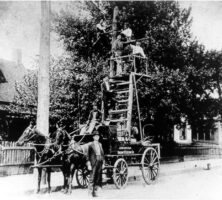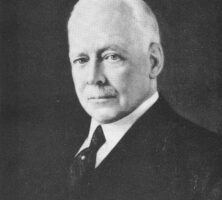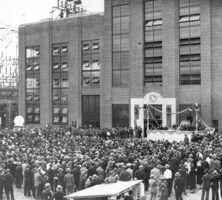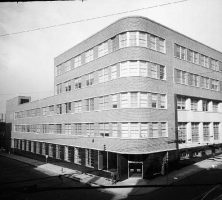Since the 1880s, when the electric company began serving Atlanta citizens, the Georgia Power Company has grown to supply Georgia residents with electric power in all parts of the state. It is now Georgia’s primary electric provider. Georgia Power has been a significant economic influence in the state as a large employer, a major taxpayer, and an instrument in bringing industry and business to Georgia. The Georgia Power Foundation is one of the largest corporate foundations in the state.
The Early Years (1883-1911)
Georgia Power Company originated in Atlanta. The company has a complex genealogy, encompassing in its history five different name changes and five different Georgia Power companies.
Electricity came to Atlanta in 1884, when the Georgia Electric Light Company of Atlanta, chartered in 1883, began service. In the early years electricity mainly provided for street lighting and street railway transportation; only a few businesses were electrically powered. Henry M. Atkinson (1862-1939) was the driving force behind the development of the electric industry in Georgia and served as such for more than thirty-five years, building the small electric business in Atlanta into the present Georgia Power Company. A native of Brookline, Massachusetts, and a Harvard University graduate, Atkinson acquired controlling stock in the Georgia Electric Light Company of Atlanta in 1891 and formed it into an entirely new company, shortening the name to the Georgia Electric Light Company. That same year, he built the Davis Street Plant, a massive steam-electric generating plant.
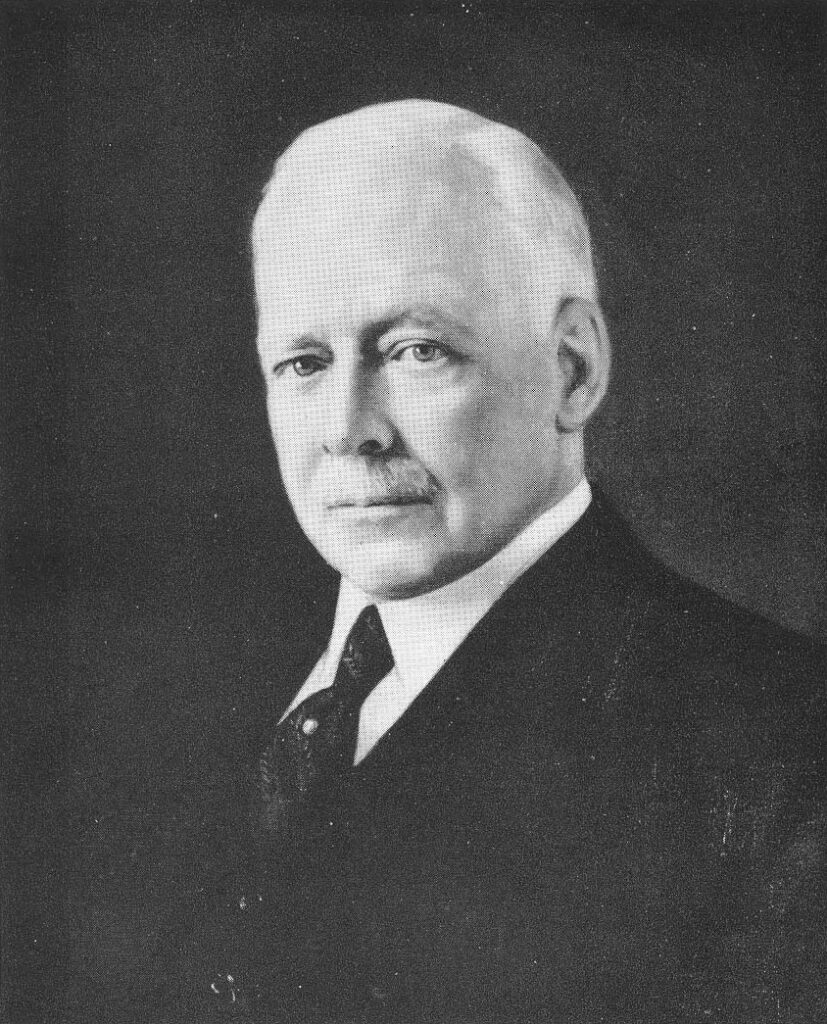
Courtesy of Georgia Power Corporation Archives
Just before the turn of the century, Atkinson and Joel Hurt, an Atlanta streetcar entrepreneur, engaged in fierce competition to gain control of the electric, streetcar, and steam-heat franchises issued by the city council. The dispute lasted for years, ending in 1902 when Atkinson bought out Hurt’s interests and formed the Georgia Railway and Electric Company. Atlanta attorney Preston S. Arkwright became president at that time and personified the company until his death in 1946. He devised the slogan “A Citizen Wherever We Serve,” an enduring motto for company employees. (In the early days the power company advertised the state widely in national publications. To promote Georgia to the nation, Arkwright created another slogan, “It’s Great to Be a Georgian.”)

Courtesy of Georgia Power Corporation Archives
In 1903 the company added to its holdings the Atlanta Gas Light Company, which operated as the gas department of the electric company until 1929. For years the Butler Street Steam Plant, acquired from Joel Hurt, acted in conjunction with the Davis Street Plant and the Alabama Street Substation to provide electricity for Atlanta. Meanwhile the Atlanta Water and Electric Power Company began construction of the Morgan Falls hydroelectric plant, the first water-generated electricity used in the city. Even before its completion, Atkinson contracted to use the entire output. The Atlanta Journal reported on October 2, 1904, that for the first time the muddy waters of the Chattahoochee River were powering streetcars on the streets of Atlanta. Just east of downtown, to encourage streetcar ridership, the company developed the popular Ponce de Leon Springs as an amusement park. The number of riders increased further when the company drained the lake across from the park and erected a stadium in time for the 1907 season of the Atlanta baseball team that the company had just bought.
The Formative Years (1912-1959)
Many changes occurred during the company’s formative years. Needing more power for Atlanta after the first decade of the twentieth century, Atkinson made an agreement to acquire a financially strapped hydroelectric project on the Tallulah River in north Georgia, newly begun by the Georgia Power Company, which had been chartered by C. Elmer Smith and Eugene Ashley in 1908.
In 1912 Atkinson combined this first Georgia Power Company, the Morgan Falls hydro plant, and the Georgia Railway and Electric Company into the Georgia Railway and Power Company (GR&PC), which completed the Tallulah Falls development. Power was transmitted to the city by way of the Boulevard Substation in Atlanta, one of the earliest outdoor substations in the nation. Eventually the company built on the Tallulah and Tugaloo rivers a total of six hydro plants, which provided enough power for industrial growth. Although the company’s sales department had recruited industry to Georgia from early in the century, it was not until 1927 that the company formalized industrial and community development into a separate department.
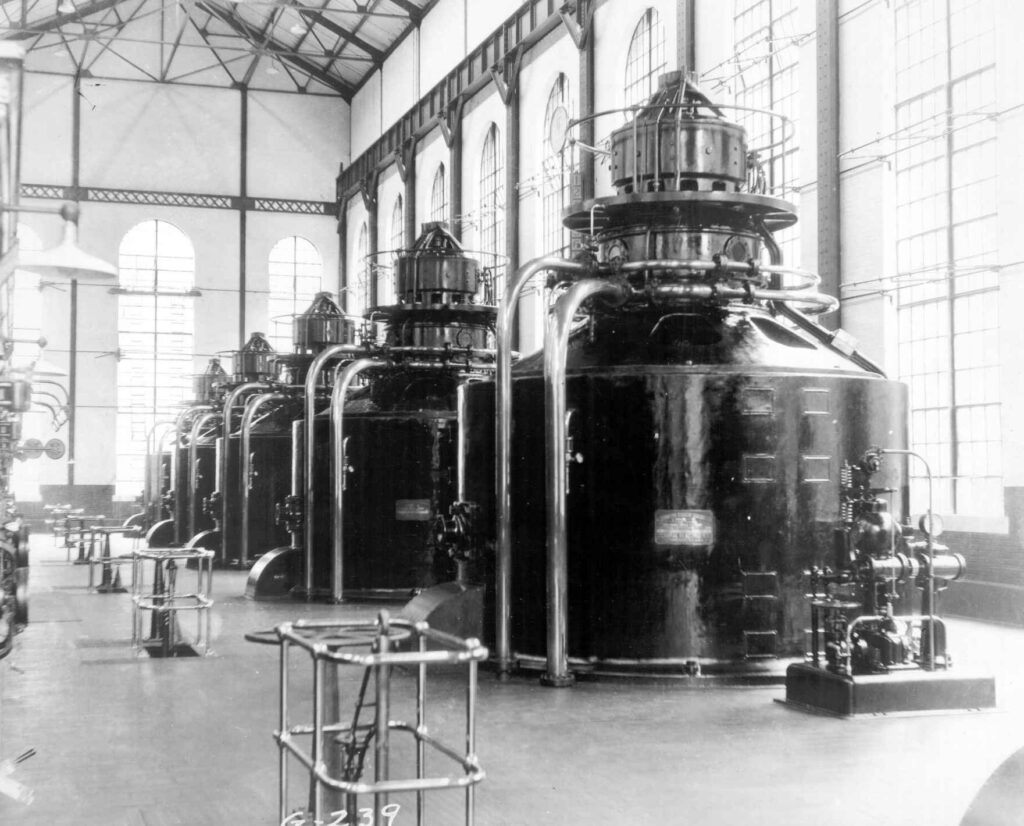
Courtesy of Georgia Power Corporation Archives
The electric company was instrumental in developing radio in Georgia and Atlanta. Because noise on telephone lines and storm damage to wires made communication with plants and substations uncertain, in 1920 the company built the first radio broadcasting station in Georgia, 4FT, later WDAW. This station rebroadcast musical programs from another pioneer station, KDKA in Pittsburgh, Pennsylvania, as a public service, and aired some local programs as well. The Atlanta Journal became interested in radio and asked the electric company engineers to build a new station in the Journal building. This station was installed in 1922 and named WSB. Radio communications with the plants also proved to be uncertain because of the electrical noise in the plants and the vagaries of radio; one could talk to someone as far off as New England or California but not to a hydro plant a hundred miles away. Not long afterward, GR&PC donated its radio station to the Atlanta
GR&PC was acquired in 1926 by Southeastern Power and Light Company, a holding company. This changed to Commonwealth and Southern Corporation (1929), which became in 1947 the Southern Company, parent company of Georgia Power today. Southern Company is a leading energy provider in the nation and the world.
In 1926 the company began a string of acquisitions of smaller municipal and independently owned electric systems. The second Georgia Power Company was formed from the consolidation of several utilities controlled by Southeastern Power and Light Company. Shortly thereafter, this company combined with Georgia Railway and Electric Company and Georgia Railway and Power Company, Athens and Rome electric properties, and East Georgia Power Company to form the Georgia Power Company (the third), which received its charter in 1927. With consolidation in 1928, the company acquired electric and street railway properties in Macon under the same name, Georgia Power Company (the fourth).
When the company acquired Columbus Electric and Power Company in 1930, yet another Georgia Power Company was chartered. It is that charter under which the current company operates. With a severe drought in Georgia in the mid-1920s, the company, relying upon hydroelectric facilities, could not produce sufficient electricity, and Arkwright decided that the company could not afford ever again to rely largely upon hydropower sources. This began an era of the construction of modern steam-electric generating plants. Plant Atkinson (1930) on the Chattahoochee River in Cobb County was the first of the steam plants built under this new directive.
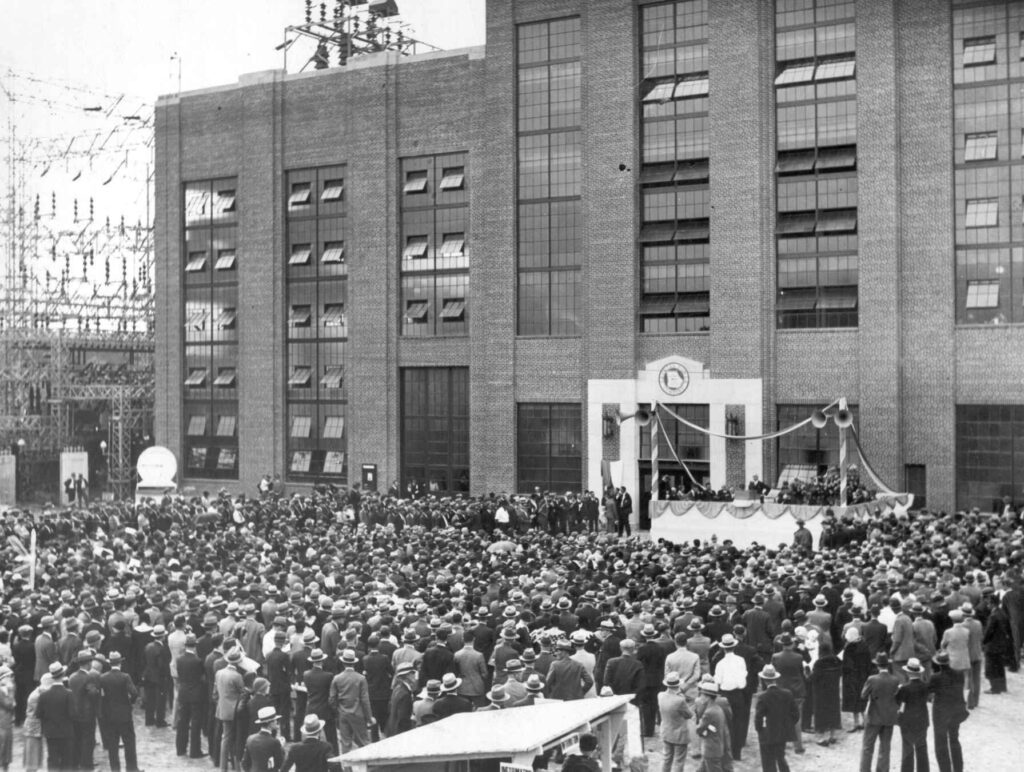
Courtesy of Georgia Power Corporation Archives
During the Great Depression era, the company organized teams of salespersons outfitted with cars and trailers (called “kitchen coaches”) to demonstrate and sell home appliances in rural areas. The company made little from the sale of appliances but profited from the additional use of electricity. Appliance purchasers benefited from the convenience of the appliances and from the company’s appliance repair service.
The Later Years (1960-2002)
Turbulent years for Georgia Power began in the late 1960s and continued through the mid-1970s. A massive construction program, high equipment inventories, the oil embargo, runaway inflation, and a recession all contributed to the crisis. Two nuclear power plants—Plant Hatch, near Baxley, and Plant Vogtle, near Waynesboro—were planned and ultimately completed. Costs rose, construction was halted on many projects, jobs were eliminated, and assets were sold. By 1976 the company emerged a leaner but stronger business and completed halted construction. One of the projects finished was the Wallace Dam on the Oconee River, a pump storage facility. Completed in 1975, Plant Bowen on the Etowah River is one of the company’s largest steam-electric plants.

Image from Counse
In 1986 the company established the Georgia Power Foundation to manage its charitable giving. That same year Georgia Power received a Governor’s Award in the Humanities.
In the 1990s the company accelerated the construction of combustion turbine plants fueled by natural gas. In 2002 Georgia Power’s parent company, the Southern Company, entered the gas distribution business again, but it was sold after a few years.


